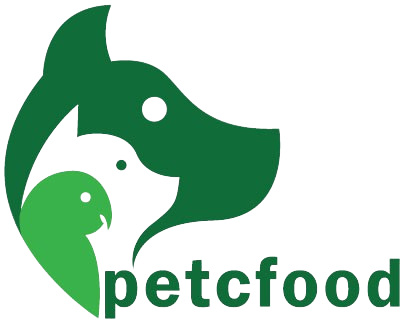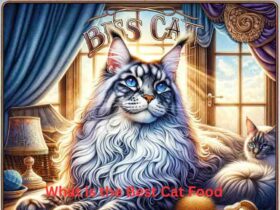Introduction to Small Dog Nutrition
In pet care, giving small dogs the best nutrition is key. It is vital to their health. Small dogs have specific dietary needs. To support their unique body and energy, they must meet these requirements. These needs are like those of larger dogs. From teacup Chihuahuas to small Pomeranians, it’s key to know the basics of feeding tiny dogs. This is key for responsible pet ownership.
The best dry dog food for small dogs breeds often has faster metabolisms. They also have higher energy levels than larger breeds. Their diets should have lots of nutrients. These nutrients give sustained energy all day. Good proteins come from animals, like chicken, turkey, or fish. They are vital for muscle growth, maintenance, and health. Also, small dogs need a mix of carbs and healthy fats. These power their active lifestyles and support their thinking.
One of the key considerations in small dog nutrition is part control. Due to their diminutive size, small dogs need fewer calories than larger breeds. Overfeeding can lead to obesity. This makes them prone to health issues. These include joint problems, diabetes, and heart diseases. So, pet owners must measure and check their small dog’s food intake. This is to keep a healthy weight and body.
In addition to part sizes, the quality of ingredients plays a pivotal role in small dog nutrition. Choose premium dog food brands. They use natural ingredients. These foods have vitamins, minerals, and antioxidants. Small dogs need them to thrive. Avoid fillers, additives, and too many carbs. This is key to preventing digestive issues and boosting nutrient absorption.
Furthermore, dietary preferences and sensitivities vary among individual dogs, necessitating tailored nutrition plans. Some small dogs may do well on grain-free diets. Others may need special formulas. These formulas address allergies or intolerances. Consult with a vet or a pet nutritionist. They can help plan personalized diets for small dogs. These diets will cater to their specific needs and preferences.
Prioritizing proper nutrition is vital for the health and longevity of small dogs. Pet owners can ensure that their beloved companions lead happy, healthy lives. They can do this by understanding their diets. They should control part sizes and choose high-quality, nutrient-rich foods. The right small dog diet lets pet owners enjoy the joy and company of these tiny pups.
Factors to Consider When Choosing best dry dog food for small dogs

Selecting the right dry dog food is crucial for the health and well-being of your furry companion. Many options are available. You must consider several factors. They ensure you give your dog a balanced and nutritious diet tailored to their needs.
examine the ingredient list. Look for high-quality protein sources. These include chicken, beef, or fish. List them as the main ingredients. Avoid products containing fillers, by-products, and artificial preservatives. They offer little nutrition and may cause digestive issues or allergies in some dogs.
Consider your dog’s age, size, and activity level when choosing a formula. Puppies, adult dogs, and seniors have different nutritional needs. So, choose a product made for their specific life stage. Small breeds, large breeds, and active dogs may enjoy specialized formulas. These are designed to support their unique metabolism and energy levels.
Check for vital nutrients. These include vitamins, minerals, and omega-3 fatty acids. They are essential for your dog’s health and growth. A good diet promotes healthy skin and coats. It also gives strong muscles and bones and the best immune function.
Check the brand’s reputation and manufacturing standards. Choose a reputable manufacturer known for producing high-quality, safe, and reliable dog food. Look for brands that test . They source ingredients and follow industry rules and standards.
Consider your budget without compromising on quality. Premium dog food may cost more. But, they often contain better ingredients and face stricter quality control. Yet, other options are available. They provide good nutrition for your dog.
By considering these factors, you can make an informed decision. They will help you pick up dry dog food. It will nourish and support your dog’s health and energy for years.
Top Features of High-Quality Dry Dog Food

Choosing the right dry dog food is essential. It ensures your dog gets the nutrients they need to thrive. Knowing the key features of good dry dog food can help pet owners. It lets them make informed decisions. They use it to pick the best option for their furry friends.
1. Protein-Rich Formulation:
Good dry dog food should have a lot of protein. It should come from animals like chicken, beef, or fish. Protein is essential for supporting muscle development, maintenance, and health in dogs.
2. Nutrient-Dense Ingredients:
Look for dry dog food. It should have wholesome, nutrient-dense ingredients. These include whole grains, fruits, and vegetables. These ingredients provide key vitamins, minerals, and antioxidants. They support your dog’s immune system, digestion, and health.
3. Limited Fillers and Additives:
Avoid dry dog foods that contain excessive fillers, artificial flavors, colors, and preservatives. Choose products with a few additives and natural ingredients. This will make sure your dog’s diet is free from extra fillers and allergens.
4. Balanced Nutrition:
Good dry dog food should be of high quality. It should have a balanced blend of proteins, carbs, fats, vitamins, and minerals. A balanced diet supports your dog’s energy levels and digestion. It also helps their health. It promotes a shiny coat, strong muscles, and a healthy weight.
5. Manufactured by Reputable Brands:
Pick dry dog food from good brands. They are known for their quality and safety. Look for brands that follow strict manufacturing standards. They also do regular quality checks and use locally sourced ingredients.
By focusing on these top features, pet owners can ensure they are providing their dogs a healthy diet. It supports their health and vitality. Buying high-quality dry dog food is an investment. It’s an investment in your dog’s long-term well-being and happiness.
Reviews of the Best Dry Dog Foods for Small Breeds

Choosing the right dry dog food is essential for the health and well-being of your small breed companion. With so many options available, it can be overwhelming to find the perfect fit. To help you make an informed decision, here are reviews of some of the best dry dog foods tailored for small breeds:
1. Blue Buffalo Life Protection Formula Small Breed Dog Food
Blue Buffalo is famous for its commitment to using high-quality, natural ingredients. Their Life Protection Formula for small breeds is no exception. This dry dog food has real meat as the first ingredient. It provides essential protein for muscle health. It also has healthy grains, fruits, and vegetables. They provide a balanced diet full of vitamins and antioxidants. It has added LifeSource Bits. They are packed with vitamins, minerals, and antioxidants. This formula supports the health and vitality of small breeds.
2. Wellness Complete Health Small Breed Dry Dog Food
Wellness Complete Health is a premium dry dog food designed for small breed dogs. It has deboned turkey and chicken as the main protein sources. This ensures good muscle growth and maintenance. This formula has omega-3 fatty acids for healthy skin and a shiny coat. It also has probiotics and prebiotics for digestive health. It is free from artificial colors, flavors, and preservatives. Wellness Complete Health offers a natural and nutritious option for small breed dogs.
3. Taste of the Wild Appalachian Valley Small Breed Dry Dog Food
Taste of the Wild’s Appalachian Valley formula is made with real venison as the main protein. It provides a unique and tasty option for small dogs. This grain-free recipe is full of nutrients. It has ingredients like sweet potatoes, peas, and blueberries. These provide a balanced diet with essential vitamins and antioxidants. It has added probiotics for digestion and no fake additives. Taste of the Wild is a great choice for small breeds with sensitive stomachs or allergies.
4. Royal Canin Small Breed Adult Dry Dog Food
Royal Canin specializes in breed-specific nutrition. Their Small Breed Adult formula is tailored to meet the unique needs of small breed dogs. This dry dog food has digestible proteins and prebiotics. They aid digestion and nutrient absorption. It also has specific nutrients to boost dental health. They reduce tartar, which is vital for small breeds prone to dental issues. It has a good taste and balanced nutrition. So, it is a top choice for small breed owners.
You need to find the best dry dog food for your small breed. This takes careful consideration of ingredients, nutrients, and brand reputation. You might prefer natural ingredients, grain-free options, or breed-specific formulas. There is a dry dog food to suit your small breed’s unique dietary needs and preferences. Pick one of these top-rated options. They ensure that your small breed dog gets the nourishment they need to thrive and be healthy and happy.
How to Transition Your Small Dog to Dry Food

Moving your small dog to dry food takes patience. You need careful planning to ensure a smooth transition. You may be switching from wet food, homemade meals, or to a new brand. Following these steps can help ease the process. They will ensure your furry friend adjusts to their new diet with ease.
1. Gradual Introduction:
Start by adding the new dry food to your small dog’s diet. Also, reduce the amount of their current food. Start by mixing a bit of dry food with their current food. Then, increase the amount of dry food over 7–10 days. This slow change prevents an upset stomach. It lets your dog get used to the new food.
2. Monitor Portions:
Pay close attention to part sizes during the transition period. Small dogs have special diets. They may need smaller portions of dry food than larger breeds. Consult the feeding guidelines on the new food packaging. Adjust portion sizes based on your dog’s age, weight, and activity level.
3. Maintain a regular feeding schedule:
Stick to your dog’s regular feeding schedule throughout the transition process. Consistency is key. It helps your small dog adjust to their new food. It prevents unnecessary stress or anxiety. Aim to feed your dog at the same times each day to establish a routine and promote healthy eating habits.
4. Add moisture:
If your small dog is used to wet food or likes a softer texture, you can add water to the dry food. This will make it tastier. Try mixing the dry food with a small amount of warm water or low-sodium broth to soften it and enhance the flavor.
5. Monitor for signs of digestive upset:
Watch for signs of digestive upset during the transition. These include diarrhea, vomiting, and changes in appetite. If you notice any bad reactions, slow the transition or ask your vet for help.
6. Offer positive reinforcement:
Encourage your small dog to try the new dry food by offering praise, treats, or rewards during meal times. Positive reinforcement can help create a good association with the new food. It can make the switch more fun for your furry friend.
Follow these steps. Take a gradual approach. You can transition your small dog to dry food. This will ensure their health and happiness. Remember to be patient and attentive to your dog’s needs. Throughout the process, seek advice from your vet if needed.

Common FAQs About Dry Dog Food for Small Breeds
1. What should I look for when selecting dry dog food for my small breed?
When choosing dry dog food for your small breed, look for formulas that are tailored to their unique needs. Opt for products that feature high-quality protein sources, balanced nutrition, and minimal fillers or additives. Consider your dog’s age, activity level, and any specific dietary requirements when making your selection.
2. How much dry dog food should I feed my small breed?
You should feed your small dog a certain amount of dry food. The amount depends on factors like their age, weight, activity level, and metabolism. Follow the feeding guidelines from the manufacturer. They are based on your dog’s specific traits. It’s essential to check your dog’s weight and adjust portion sizes to maintain a healthy body condition.
3. Is grain-free dry dog food better for small breeds?
While grain-free options may be suitable for some dogs, there is no definitive evidence to suggest that they are better for small breeds. Grain-free diets may be beneficial for dogs with specific dietary sensitivities or allergies to grains. But, you must choose a grain-free formula. It must provide balanced nutrition and essential nutrients for your small breed’s health.
4. Can I mix dry dog food with wet food for my small breed?
Mixing dry dog food with wet food can be a convenient option for small breeds who enjoy a varied diet or have difficulty chewing dry kibble. But, it’s essential to ensure that the combined diet still meets your dog’s nutritional needs and does not exceed their daily calorie requirements. Consult with your veterinarian to determine the appropriate ratio of dry to wet food for your small breed.
5. How can I tell if my small breed is allergic to their dry dog food?
Small breeds can show signs of food allergies. These signs include itching, scratching, skin irritation, digestive upset, and ear infections. If you suspect that your dog may be allergic to their dry dog food, consider switching to a hypoallergenic formula or consulting with your veterinarian for further evaluation and guidance.
Conclusion
Small dogs are cherished members of our families. They deserve the best care and nutrition. These things support their health and happiness. As we’ve explored, providing optimal nutrition for small breeds involves understanding their unique dietary requirements, selecting high-quality dry dog food tailored to their needs, and transitioning them to new diets with care and consideration.
By prioritizing ingredients such as protein-rich sources, balanced nutrition, and limited fillers, pet owners can ensure their small dogs receive the essential nutrients they need to thrive. Additionally, monitoring part sizes, maintaining a regular feeding schedule, and offering positive reinforcement during meal times contribute to a successful transition to dry dog food.
While navigating the world of dry dog food for small breeds may seem daunting at times, being armed with knowledge and understanding common questions and concerns can help pet owners make informed decisions. Consulting with veterinarians and paying attention to their small dog’s individual needs further ensures they receive the best possible care.
the bond between pet owners and their small dogs is strengthened through proper nutrition and attentive care. By providing a diet rich in quality ingredients and tailored to their specific needs, pet owners can enjoy the companionship and joy that small dogs bring into their lives for years to come.















Leave a Review